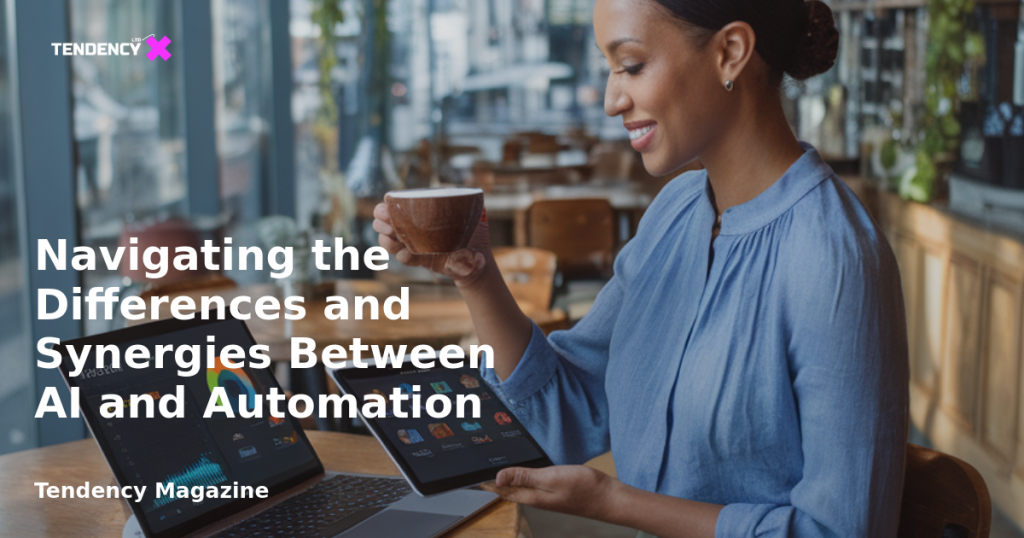Navigating the Differences and Synergies Between AI and Automation

Table of Contents
- Understanding Automation
- Exploring Artificial Intelligence (AI)
- Key Differences Between Automation and AI
- How AI and Automation Work Together
- Frequently Asked Questions
Understanding Automation
Automation involves the use of technology to perform tasks with minimal human intervention. Imagine a coffee machine programmed to brew your morning coffee at a set time. While you sleep, the machine activates, heats water, pierces the coffee pod, and prepares your coffee. Automation has been around for centuries, from ancient water-wheel mills to the assembly lines of the Industrial Revolution. By automating repetitive physical tasks, humans are freed to focus on more complex and creative endeavors.
In today’s digital age, automation has expanded significantly, encompassing both hardware and software solutions. Robotic Process Automation (RPA) is a prime example, allowing software robots to handle repetitive tasks that previously required human input. For instance, RPA can extract data from emails and populate forms, sparing employees from tedious chores.
If you manage an online store, you’re likely familiar with eCommerce automation tools like inventory management systems, social media scheduling platforms, and demand forecasting tools that streamline supply chain management. Automation ensures seamless business operations, enabling you to concentrate on high-value activities.
Exploring Artificial Intelligence (AI)
Artificial Intelligence (AI) refers to a suite of technologies designed to simulate human intelligence. AI systems analyze vast datasets, identify patterns, draw conclusions, and adapt over time. As data grows, AI learns, self-corrects, and problem-solves without explicit programming or human intervention.
AI technologies include machine learning, which involves training algorithms on datasets to make predictions, and deep learning, which uses neural networks to process information similarly to the human brain. A well-known application of AI is chatbots powered by large language models (LLMs), which understand and generate natural language responses.
AI excels at tasks like image recognition and trend prediction, traditionally human domains. These capabilities offer numerous business benefits, from informed decision-making and personalized product recommendations to fraud detection and complex data analysis.
Despite its impressive capabilities, current AI is considered “narrow” or “weak” AI, designed for specific tasks. In contrast, “strong” or “artificial general intelligence” remains theoretical, representing AI that could think abstractly and adapt to new situations—a concept still far from reality.
Key Differences Between Automation and AI
While automation and AI both enhance efficiency and reduce costs, they differ in several key aspects:
Purpose
Automation focuses on executing tasks consistently, following predefined rules without variation. It’s ideal for repetitive tasks, like tallying numbers in an accounting ledger. AI, however, aims to handle complex processes, learning, predicting, and making decisions akin to human cognition. While automation reconciles accounts, AI can analyze data patterns to forecast future revenue.
Adaptability
Automation is reliable but lacks adaptability. It follows set rules without deviation, like a coffee machine that brews coffee regardless of added grounds. In contrast, AI is dynamic and context-aware, adjusting responses based on new data. An AI-powered coffee machine could sense grind size and density, optimizing brewing parameters for a perfect cup every time.
Technology
Automation has existed for millennia, from mechanical processes like the Gutenberg press to digital solutions. However, AI requires computational power and extensive data to function effectively.
Learning
AI’s core strength lies in learning and self-improvement. It gathers and analyzes data to enhance performance. Traditional automation requires manual updates for improvements. Consider spell-checkers: automated versions need manual updates for new slang, while AI-powered autocorrect learns from usage patterns to recognize new terms.
How AI and Automation Work Together
The convergence of AI and automation gives rise to intelligent automation, a self-improving blend of AI technologies and digital automation (like RPA). Intelligent automation performs repetitive tasks, gathers data, and analyzes it to make informed decisions without human intervention.
For instance, an automated program might send email surveys to customers post-purchase, inputting results into a spreadsheet. If the program uses AI to analyze survey data, identify patterns, and predict risks, it exemplifies intelligent automation.
Chatbots also showcase intelligent automation. Basic chatbots rely on automation for predefined responses, but intelligent automation employs AI to handle complex queries, enhancing customer satisfaction.
Frequently Asked Questions
What is the difference between AI and automation?
The primary distinction is that automation executes routine tasks based on set rules, while AI incorporates decision-making, learning, and adaptability. Both technologies boost efficiency and reduce human error, with AI offering a more dynamic and adaptive approach.
Can automation be done without AI?
Yes, automation can function without AI, following static rules to complete tasks. It doesn’t adapt or make decisions if circumstances change, unlike AI-driven systems.
In conclusion, both automation and AI are transformative technologies that enhance efficiency and reduce human error. While they have distinct purposes and capabilities, their synergy in intelligent automation offers businesses a powerful tool for optimizing processes and making informed decisions. As technology evolves, understanding the nuances and potential of automation and AI will be essential for staying competitive in the digital age.
2025 Tendency LTD. All rights reserved.

